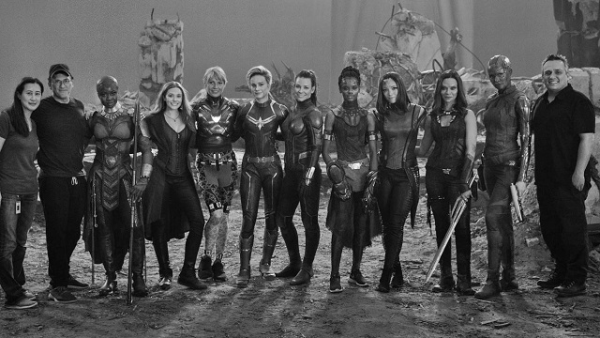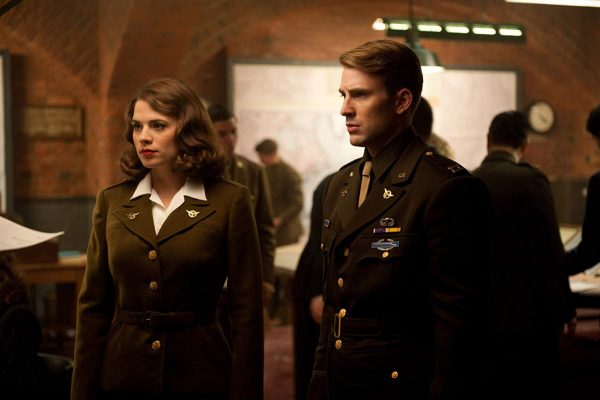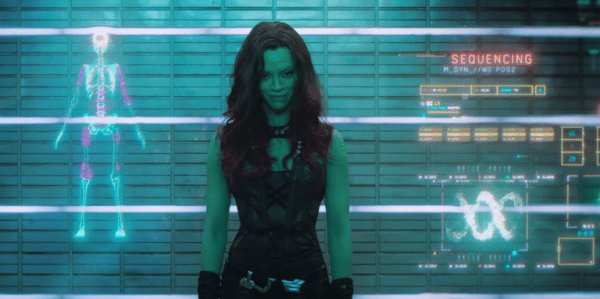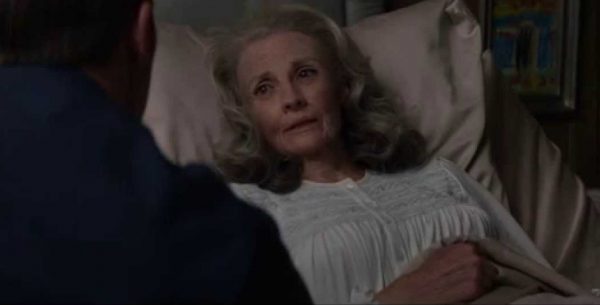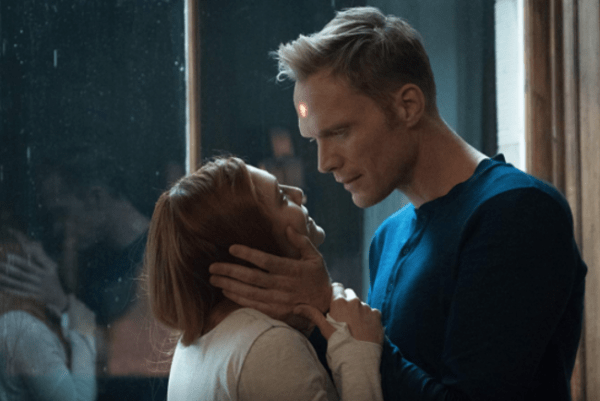Pim Razenberg on the role of women in the Marvel Cinematic Universe…
Avengers: Endgame presented audiences worldwide with a quick look at what might be in store for the future of the Marvel Cinematic Universe: during the epic final battle on the remains of the Avengers facility most of the MCU’s women united in a single shot to make their stand against the genocidal Thanos. Combined with the arrival of Captain Marvel a few months prior, as well as the re-introduction of Jane Foster in Thor: Love and Thunder, Marvel Studios is showing an increased focus on women in their ever-expanding world. This hasn’t always been the case, though – in fact, the early MCU films indicated the exact opposite…
Phase One: The Love Interests
Between 2008 and 2011, Phase One introduced the main Avengers, as well as their love interest. For Tony Stark there was his trusted personal assistant Pepper Potts, Bruce Banner found peace in the arms of cellular biologist Betty Ross, Thor shared his time on Earth with scientist Jane Foster and Steve Rogers fell for officer Peggy Carter of the Strategic Scientific Reserve. All four characters were portrayed as smart, independent and successful women, yet their stories – and their positions within MCU-society – were only there to support the emotional development of their masculine counterparts.
Though on paper Pepper, Betty, Jane and Peggy had much to offer, the scale and scope of the expanding MCU didn’t allow them much opportunity for growth. 2012’s team-up The Avengers side-lined the latter three and granted Pepper only a small cameo. Still, despite having only a small cameo in the film, Pepper proved to be the most resilient female (side) character the MCU had to offer.
Phase Two: The Moral Support
As a whole, the Marvel Cinematic Universe focussed mainly on action and adventure. This is partly why Phase Two struggled to find a place for its female characters in its storylines. Phase One’s women had served their purpose as love interests once the curtains closed. Having guided Marvel’s leading heroes on their path to heroism, it was unclear what their role would be in further instalments. The MCU’s writers only partly found an answer to this problem, side-lining some characters and changing the role of others.
During Phase One’s Iron Man 2 Pepper was promoted to CEO of Stark Industries, granting her more responsibility and allowing her to grow as a female professional within the series. By the end of the film, however, she became romantically involved with Tony. This turned her into the emotional anchor the writers needed to allow the hero to grow as an individual in both The Avengers as well as Iron Man 3. In The Avengers Pepper’s cameo served to highlight the emotional impact of the sacrifice Stark was ready to make by the end of the film. Her role in Phase Two continued to be one of support: she was the voice in Stark’s head, steering him clear of his mistakes and taking on the responsibilities Stark no longer wished to deal with. Momentarily, Iron Man 3 offered the promise of radical change for the character when Pepper gained her own set of superpowers through the Extremis virus, but a short voice over by Stark at the closure of the film cleared her of her heroic potential, leaving her once again by the side-lines once Avengers: Age of Ultron came around.
Much like Pepper, Jane was also granted a larger role in Phase Two. She became a key figure in the main storyline of Thor: The Dark World. Having served their purpose in the hero’s solo outings, however, both women were (again) side-lined in Age of Ultron. Their absence was explained away with a particularly lazy piece of writing: during a scene set at a victory party, both characters were said to be unable to attend the festivities due to the responsibilities arising from their (successful) professional careers. Though the few lines of dialogue granted the women a bit of off-screen development, the scene only served as a quick explanation why neither one of them showed up in the film. Though contrasting gender roles and portraying Pepper and Jane as strong, independent women, the scene also signalled a sore point within the MCU: it gave clear indication that women were not being given their due within the series and were not deemed important enough to carry over into the team-up films. Leaving the characters out of the Avengers series was a simple, cost-effective choice, which heavily contrasted the concept of the MCU’s female characters as “successful women”: the characters were not needed to support the film’s main storyline and were thus left out.
Still, it was Betty and Peggy who really got the short end of the stick. After The Avengers traded Edward Norton in for Mark Ruffalo as the Hulk, all characters from 2008’s The Incredible Hulk were quickly swept under the rug and Betty was never mentioned again. Meanwhile, Peggy had aged significantly since the events of Captain America: The First Avenger and was replaced by Natasha Romanoff in Captain America: The Winter Soldier. Despite not having any sort of romantic relationship with Steve Rogers, she still managed to lock lips with the hero before the closing credits.
Halfway through Phase Two, a new, more sustainable kind of love interest was introduced into the MCU in the shape of alien warrior Gamora. Debuting in 2014’s Guardians of the Galaxy, Gamora had a stronger resemblance to Black Widow than to the previously mentioned MCU women. Rather than serving mainly as a love interest, Gamora was introduced as a full-fledged (main) character, acting independently from the narrative’s hero. Both the introduction of Black Widow in Iron Man 2 and that of Gamora, however, were still infused with the tendency of having the female character lean towards a romantic relationship with the film’s main protagonist. In fact, in spite of being a badass superspy, Natasha herself played the role of “the girl” four times over, fluttering her eyelashes at Tony in Iron Man 2, supporting Steve in The Winter Soldier, making out with Bruce in Age of Ultron and sacrificing herself for Clint in Endgame.
After Age of Ultron, Phase Two’s closing chapter Ant-Man introduced yet another successful business women into the Cinematic Universe: Hope van Dyne, the senior board member of Pym Technologies. Hope’s playful relationship with main hero Scott indicated a slight chance in the way the MCU treated their love interests, giving her a storyline of her own; one that wasn’t necessarily connected to that of Scott. Both Hope and Gamora’s storylines focussed on familial love towards their parents/siblings, which helped sustain their independent arcs throughout the series.
Phase Three: Love in the Age of Heroes
Age of Ultron’s handling of the MCU’s supporting women didn’t promise much for the characters’ further development. The Phase Three-opener Captain America: Civil War only made things worse. Peggy died off-screen and the void she left behind was filled by what would become the MCU’s most clunky, shoe-horned on-screen romance, when Steve started dating Peggy’s niece Sharon – who in turn was completely forgotten after the character shared her first kiss with the hero. Peggy lived on in flashbacks, as well as her own TV-series, but her impact on the cinematic side of the MCU was reduced to that of a memory: she became a symbol of hope for Steve; something to help him remember who he was and what he was fighting for.
Despite Civil War’s strong focus on Tony Stark as a main character, Pepper was once again left out of the character-heavy drama. Story-wise, this made sense, since her character had always served as Stark’s voice of reason. If she had shown up as Tony’s moral compass in either Age of Ultron or Civil War, she would have easily been able to suppress most of Tony’s emotional impulses, which drove the overarching plot of both films. Though she starred in more MCU films than any other supporting female character, Pepper’s storyline was completely dictated by the needs of the man she was written to love. Small roles in Spider-Man: Homecoming and Avengers: Infinity War re-introduced Pepper as the fiancée of a more grown up and responsible Iron Man, who, by the start of Avengers: Endgame settled down with Potts to start a family. Again, Pepper played Tony’s voice of reason.
Jane’s absence from the silver screen continue throughout Phase Three when, despite being an important part of Thor’s backstory on Earth, the character was once again put to pasture in Thor: Ragnarok. In the film, Thor states that they broke up following his quest for the infinity stones, which seemed a bit off-mark after the couple’s hopeful reunion at the end of The Dark World. Endgame further turned their relationship into a joke when Thor comically reminisced about their relationship.
Doctor Strange and Spider-Man: Homecoming introduced new love interest into the MCU and Ant-Man and the Wasp added significant weight to the role of Hope van Dyne. Overall though, the importance of love and romantic relationships was heavily downplayed within the MCU, as the portrayal – or lack thereof – of Jane, Pepper, Betty and Peggy had already signalled in the early Phase Three films.
Most relationships formed within the later movies of the MCU bloomed and perished off-screen, such as in the case of Thor and Jane, Bruce and Natasha, and Steve and Sharon. Other relationships, such as the romances between Wanda and Vision, Gamora and Peter and the re-kindled relationship between Pepper and Tony mostly developed off-screen and, once their love turned into serious commitment, quickly ended in tragic death.
Instead of focussing on romantic relationships, which hadn’t always worked out in earlier films, Phase Three placed a stronger focus on platonic, friendly relationships by embracing a series of odd character pairings. Examples are the relationships between Steve and Sam, and Steve and Tony (Civil War), Thor and Bruce (Ragnarok), Tony and Peter (Homecoming), T’Challa and Everett (Black Panther), Thor and Rocket (Infinity War) and Carol and Nick (Captain Marvel). Most of the latter Phase Three movies heavily downplayed further romantic storylines. Spider-Man: Far From Home, strongly supported this more loose stance on romance by ridiculing the feeble nature of teenage relationships through Betty and Ned’s flash in the pan relationship.
Phase Four: The Continued Development of the Buddy Movie
In short, Phase One treated its supporting female cast as most blockbusters do. Though most of the films portrayed their female characters as successful individuals, they were mostly there to support the male heroes, taking on stereotypical gender roles. Due to the often unsustainable nature of such characters over the course of a longer narrative – once the curtains fell on a kiss, their roles were pretty much played out – the MCU struggled to find a place for its established “lovers” in Phase Two. Since none of the Phase One women had their own, independent storylines to justify their presence in further movies, they were either cast aside or reshaped for further outings. New heroines, such as Gamora and Hope were given more meatier roles during their first appearance, shaping them as individual characters to prevent such issues from rising in the sequels that would inevitably follow. This, however, also meant taking a step back from the concept of “love” as a main theme within the storylines of the male leads. To balance out the plot, the main protagonists of Phase Three were given strong secondary leads to bounce off.
What does this all mean for the women of the MCU going forward? Looking at Phase Four, it seems like the MCU will continue to up the antenna on cross-over movies like Ragnarok, linking Doctor Strange to the Scarlet Witch and the Falcon to the Winter Soldier. It is very likely more announcements regarding intriguing character pairings are bound to follow for both Phase Four and Five.
As for the concept of love in the MCU, Taika Waititi surprised everyone by convincing Natalie Portman to return to the role of Jane Foster for Love and Thunder. Portman, who’s character stemmed from Phase One, had previously indicated to be unhappy with her involvement in the MCU – which is understandable given her character’s initial strictly gender-based role in the franchise. Phase Four, however, seems to be making a new promise towards the MCU’s female characters: Marvel will finally allow its women to shine on their own, by raising Natasha Romanoff to the role of titular heroine in Black Widow (after a decade of playing second fiddle to her male colleagues) and by bringing Jane Foster back in a big way for Love and Thunder, giving her the attention she had long deserved.
What are your thoughts on the portrayal of the MCU’s supporting female cast? Let us know in the comments below or on our social channels @FlickeringMyth…
Pim Razenberg is both a filmmaker and a film buff. Having kept a record of every movie he watched since childhood, Pim followed up his love for film by writing his master thesis on the socio-political contextualization of superhero films and became a freelance entertainment writer.
